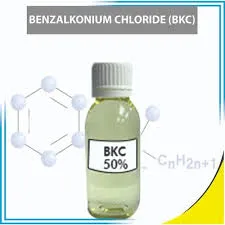cationic polyacrylamide
Cationic polyacrylamide (CPAM) is a water-soluble polymer widely used in various industrial applications due to its excellent flocculating and binding properties. This unique polymer is formed through the polymerization of acrylamide and a cationic monomer, which imparts positive charges to the polymer chain. These positive charges enable CPAM to effectively interact with negatively charged particles, making it a valuable agent in processes such as water treatment, paper production, and mineral processing.
One of the primary applications of cationic polyacrylamide is in water treatment. In municipal and industrial wastewater treatment facilities, CPAM is utilized as a flocculant to facilitate the aggregation of suspended particles, including colloids and organic matter. When added to wastewater, the positively charged CPAM molecules neutralize the negative charges of these suspended particles, leading to the formation of larger flocs. This aggregation improves the sedimentation process, allowing for the efficient removal of contaminants and ensuring that treated water meets environmental regulations.
In addition to its role in water treatment, cationic polyacrylamide is also significant in the paper industry. It serves as a retention and drainage aid during the paper manufacturing process. By improving the retention of fibers and fillers in the paper slurry, CPAM enhances the overall quality of the final product while reducing the amount of raw materials required. Moreover, its use contributes to increased drainage rates, leading to shorter production cycles and lower energy consumption.
Another vital application of CPAM is in the mineral processing industry, where it is employed as a flocculant in the separation of valuable minerals from ores. The cationic properties of the polymer allow it to interact with negatively charged mineral particles, aiding in the formation of larger aggregates that settle more quickly. This efficiency boosts the overall yield of the extraction process and minimizes the environmental impact by reducing the amount of chemicals needed for separation.
cationic polyacrylamide

The effectiveness of cationic polyacrylamide can vary depending on its molecular weight and the degree of cationic substitution
. High molecular weight CPAM is particularly effective in applications involving high-solid-content systems, while lower molecular weights may be preferred for specific applications where enhanced hydration and dispersion are required. Therefore, selecting the appropriate type of CPAM is crucial for achieving the desired results in various applications.Despite its numerous advantages, the use of cationic polyacrylamide is not without concerns. The potential neurotoxicity of acrylamide, a monomer used in its production, has raised environmental and health concerns. As a result, ongoing research focuses on developing safer alternatives and improving the synthesis process to mitigate these risks.
In summary, cationic polyacrylamide is an essential polymer in various industries due to its outstanding flocculating and binding capabilities. Its applications in water treatment, paper production, and mineral processing demonstrate its versatility and effectiveness. However, careful consideration of its health and environmental impacts is crucial for its sustainable use in the future.
-
Water Treatment with Flocculant Water TreatmentNewsJun.12,2025
-
Polymaleic AnhydrideNewsJun.12,2025
-
Polyaspartic AcidNewsJun.12,2025
-
Enhance Industrial Processes with IsothiazolinonesNewsJun.12,2025
-
Enhance Industrial Processes with PBTCA SolutionsNewsJun.12,2025
-
Dodecyldimethylbenzylammonium Chloride SolutionsNewsJun.12,2025





